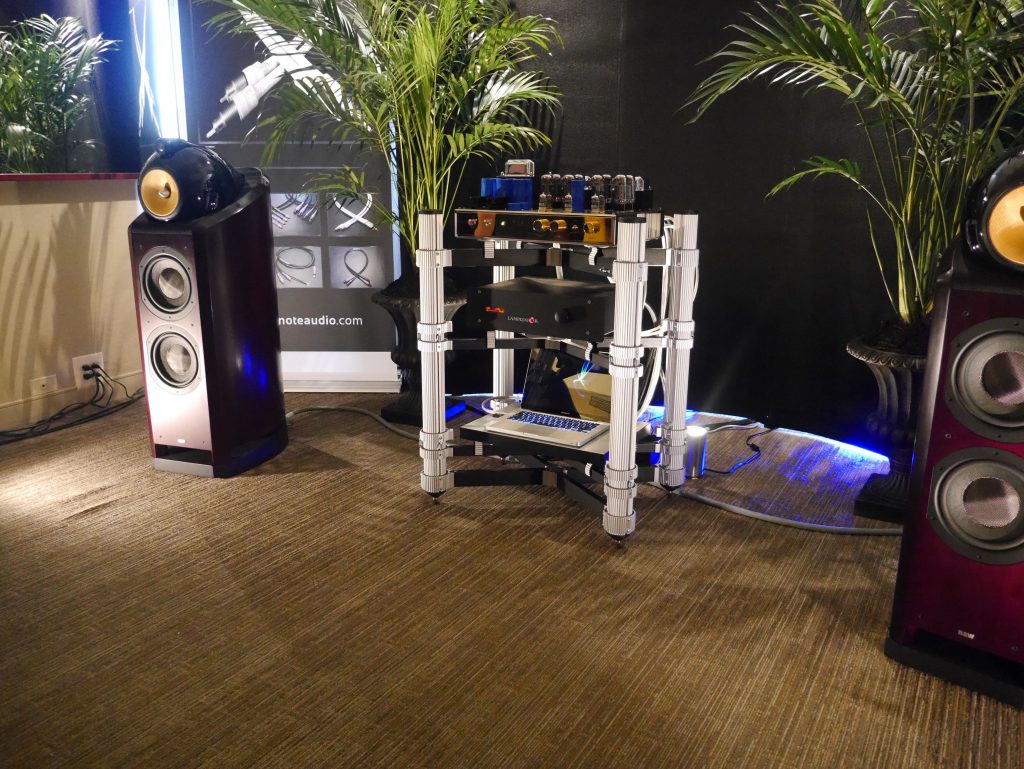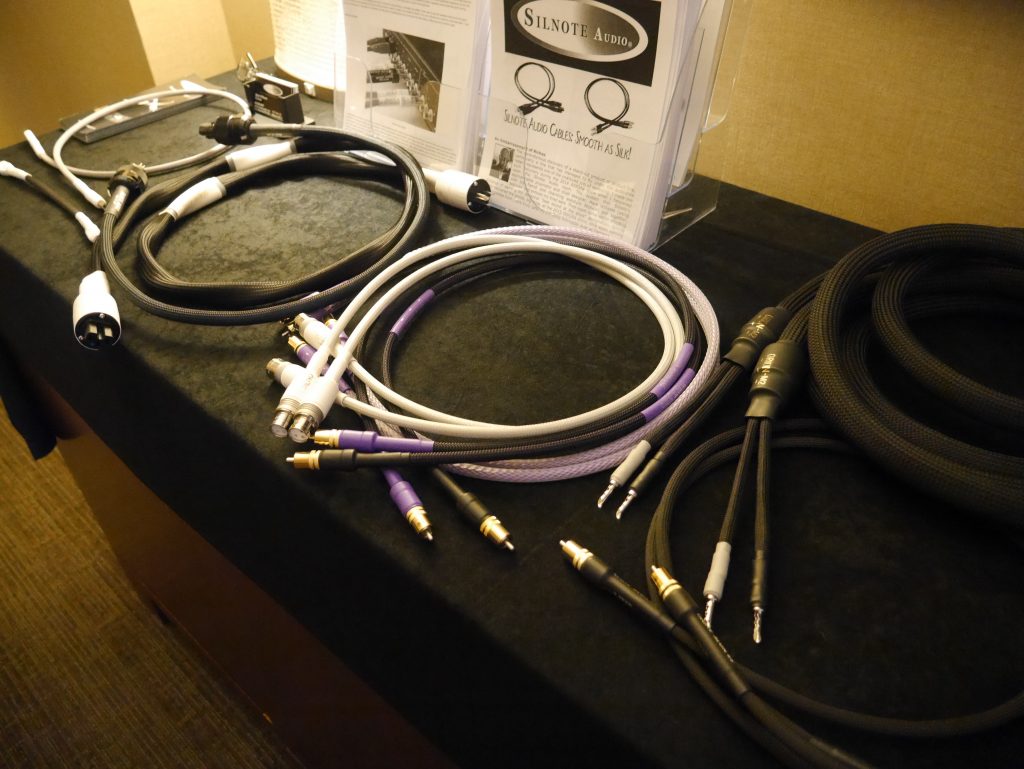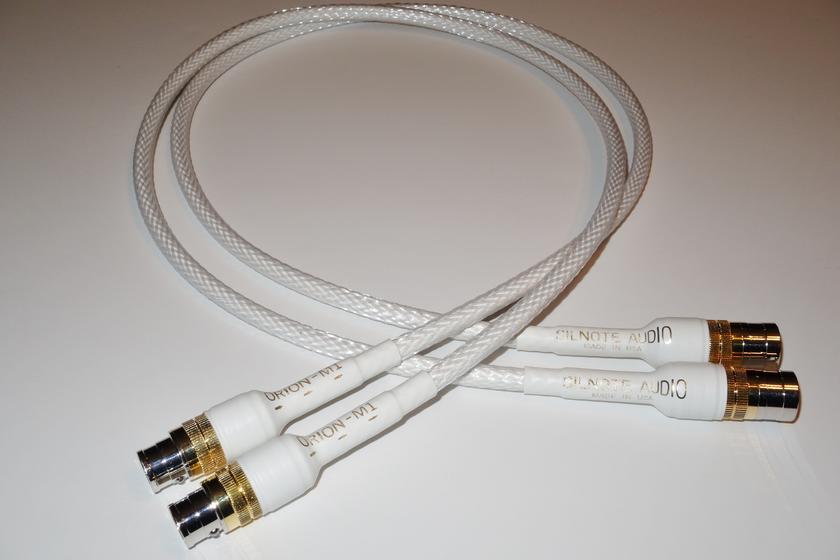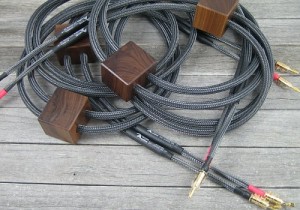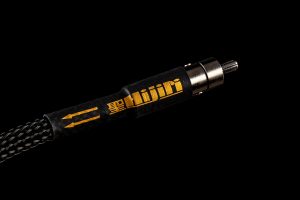For several months, the superb Silnote Audio Orion-M1 Master Reference XLR interconnects have anchored my reference system. The time spent testing their sonic mettle has proven an unmitigated delight, and a revelation. I first encountered Silnote's superb line of audio cables at the 2014 AXPONA audio show. I stumbled upon the Silnote Audio room purely by accident and was immediately taken by the superb sound the firm's approachable proprietor and chief designer, Mark Williams, conjured from the less-than-ideal listening space. Smooth yet detailed, dynamic yet relaxed, the Silnote room stood out as one of the show's best. The room came with-in shouting distance of earning a "best of show" designation from yours' truly a year later at AXPONA 2015.
Image by Maurice Jeffries
To my ears, here were cables that offered superbly natural, neutral and lifelike sound, all at a very fair tariff. In a nutshell, the Silnotes hit all my audio "what counts" boxes. My glowing review of a loom of Silnote goodies in 2015 confirmed what my ears told me at the AXPONA shows: these were reference-grade cables that deserved to be heard by a much wider audience. When I expressed to Mark my interest in reviewing the second from-the-top Orion-M1 interconnects for these pages, he was only too happy to oblige.
Silnote's extensive line-up of hand-made wares (the range runs the cable gamut) exudes quality. Flexible and easy to install, beautifully hand-crafted, but eschewing garish packaging and decorative frills in favor of solid engineering and superb build, they are models of restraint and sophistication. Design-wise, the Silnote website describes the Orion-M1s as their state-of-the-art Master Reference Series cables (second only to the firm's $5000+ per meter Epirus Master Reference Series offering). For the M1s, Silnote uses Ultra-Pure silver, zero crystal solid-core copper, and 24K gold in a true triple balanced configuration (meaning all three conductors are utilized, an arrangement employed in each Silnote XLR cable) for the best possible sound.
For this review, I received a single meter-long balanced (XLR) M1 interconnect. This allowed me to press into service my two personal Silnote Poseidon Signature cable runs (one RCA-terminated, the other XLR) to link various source components to my reference Parasound JC-2 preamplifier. I inserted the M1 between the JC-2 and my beloved Bryston 4B³ power amplifier.
Image by Maurice Jeffries
Sonic Impressions
I have more than once described the Silnotes as "sonic chameleons", a sentiment that bears repeating here. In my 2015 assessment of the lower priced Poseidon Signature interconnects, I marveled at their stunning neutrality, their smooth but beautifully detailed presentation, their ability to reproduce the subtlest of tonal shadings, and their impressive dynamic swagger. The Orion-M1s take these strengths to the next level.
They mediate musicality and detail retrieval with unwavering fidelity and naturalness. On Boz Scaggs Speak Low (Decca), the M1 captures the music's micro and macro-dynamic ebb and flow as beautifully and naturally as I have ever heard. While Boz doesn't have the widest vocal range in the business, he nevertheless manages to draw from a wellspring of vocal techniques to imbue each track with a riveting emotional urgency. He weds airy hesitance to his signature gruff, throaty, smoky delivery to get to the heart of things. The Orions faithfully capture every nuance, every inflection, every pang of regret and longing he projects.
Instrumental textures receive the same nuanced and delicate treatment. On his stellar rendition of I Wish I Knew, bass lines pulsate and bounce with a life-like naturalness, but never boom. And with speakers and electronics that can faithfully capture such details, the Orion-M1s allow you to luxuriate in the presence of the lower woodwinds as they softly murmur and purr in the back-ground.
Lest you think that the Orions are all about delicacy and refinement, playing something a bit more dynamically propulsive—like Claudio Abbado's 1996 recording of Karl Stockhausen's masterwork Gruppen (Stockhausen: Gruppen - Deutsche Grammophon 447 761-2)—should convince you otherwise. Gruppen ranks amongst the most complex orchestral works ever conceived. The Gruppen score calls for three physically separate orchestras or groups ("gruppen") situated in a massive horseshoe configuration to perform simultaneously. Stockhausen's variation on the "mega" orchestra theme is unique in that each of the three groups frequently employs rhythmic patterns and time signatures wholly separate and distinct from the other units. In this temporally unsettling parallel musical universe, individual notes become less important than overall musical momentum, timing, tonal density, sonority, and dynamic contrasts. Gruppen will test the dynamic and frequency range capabilities of the very best systems.
The M1 cables never lose their composure on this dynamically and texturally challenging work. Violas retain their distinct tonal voices, as do cellos and violins. One can easily identify the periodic use of the African slotted wood drums in the dense mix, and pick out the cowbell from the tam-tam as well. Getting all these elements right requires a component that excels in the reproduction of instrumental tonality, and that places everything right where it should be temporally.
One cannot overstate the importance of accurately capturing initial musical transients and their attendant decays, both dynamically and temporally, in the reproduction of music in a home environment. It is through these difficult-to-reproduce transient cues that sensitive listeners can distinguish the unique sound of a trumpet from a tenor saxophone, a piano from a harpsichord, or as mentioned before, a cowbell from that of a tam-tam.
All components impact the music's temporal signature in one way or another. Some reproduce temporal relationships more-or-less intact; others don't. With lesser cables, these inter-temporal bug-a-boos homogenize the sound, resulting in an overly-smooth presentation lacking in detail, instrumental traction, and air. The Silnotes tolerate none of this nonsense. They reproduce transient details, sustains, and decays with striking realism. As icing on the cake, they envelope each voice and instrument with just the right whiff of air and openness, adding to a heightened sense of realism and deeper musical involvement.
Tonally, the Orion's never stray from middle-of-the-road neutral. Through them, one can easily discern the sonic differences between various front-end electronics. With my reference phono stage (Parasound's JC-3+) boosting the output of Dynavector's low output DV-20X2 mc cartridge, Daniel Barenboim's evocative reading of Arnold Schoenberg's Verklärte Nacht (Transfigured Night) (Schoenberg: Verklarte Nacht /Wagner: A Siegfried Idyll /Hindemith: Trauermusik [Angel S-36484]) can captivate. Seductively airy and ethereal, if not quite neutral in balance, the Barenboim exhibits a milky creaminess that is at times ravishing, if a tad too sweet in absolute terms. The M1 cables capture the inherent sweetness and liquidity on display here in all its glory, but add nothing to thicken the mix. One hears what is on the recording, and what the front-end electronics impart in terms of added seasoning, which to my ears amounts to very little.
With a more naturally balanced recording like jazz clarinetist Jimmy Giuffre's seminal Jimmy Giuffre 3 [ECM 849 644-1], the Silnotes capture the eerie holographics and George Russell inspired dissonances of these March and April 1961 dates with consummate fidelity. Bass textures unravel like fine woven tapestries, with every musical thread sounding of a unified piece.
Image by Maurice Jeffries
Final thoughts
As with the best audio components, the M1s sonically disappear. What few colorations they impart on the music are easy to listen through and around (and even more difficult to qualify). They cannily balance musicality and detail retrieval, and in doing so, come within shouting distance of the best cables around, cost notwithstanding. They represent the best effort from an engineer who knows what music sounds like, but for whom shameless self-promotion seems literally anathema.
It goes without saying that Mark and his outstanding cables earn my very highest recommendation. I've been painfully aware for some time now that it's going to be very difficult to listen to recorded music without the M1s in my reference system. I'm thinking that at the end of the day maybe I won't.
Silnote Audio Orion-M1 Master Reference Series (XLR) Interconnect Cables
$3295 for a 1 meter pr.
Silnote Audio




